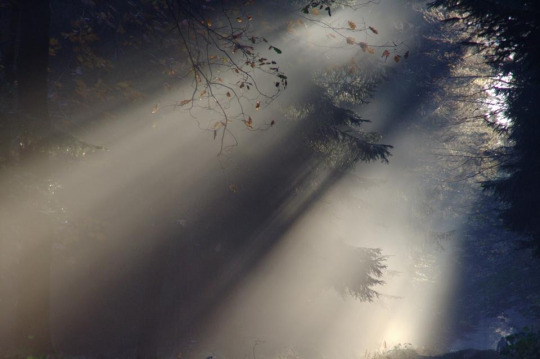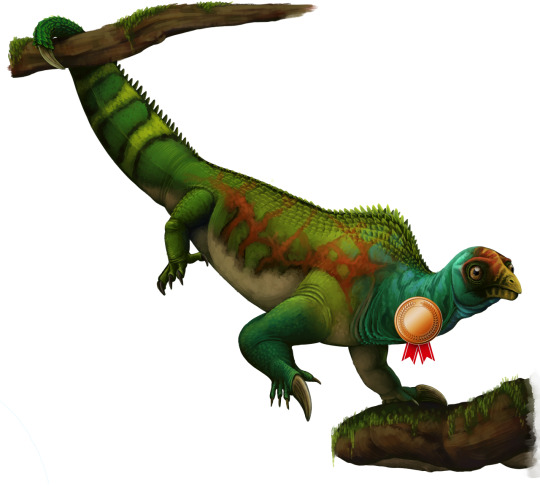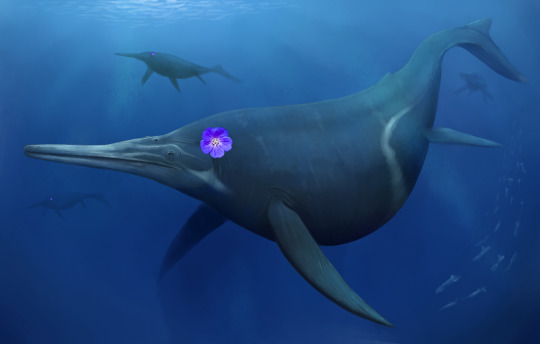|| 22👽|| Geology undergrad 💎|| I share photos from my classes, as well as interesting articles|| Spread the knowledge||
Don't wanna be here? Send us removal request.
Text

Clinopyroxene in a trachytic groundmass
86 notes
·
View notes
Link
If you’re interested in learning about our planet’s climate systems, here’s a start!
The El Nino Southern OScillation is a climate variability that occurs over the souther Pacific and affects both south east Asian countries and South American countries. It’s related to the exchanges that occur between the Pacific and the Indian Ocean.
Fun fact: It’s one of our inter-annual systems which means it oscillates over a period of multiple years to sometimes decades. We always have variabilities like our North Atlantic Oscillation (NAO) which occurs on a multi-decadal scale.
The data we collect for paleo climate studies on these systems may come from fossils, sediments or ice cores, among other things.
#climate science#tropical climate#paleoclimatology#enso#nao#north atlantic ocean#pacific#science#climate
17 notes
·
View notes
Text
I have so many articles on my mobile chrome browser that I haven’t read yet, haha. I think I’ll start going through them and posting some here.
5 notes
·
View notes
Link
Hi all! I hope everyone’s been doing well.
My first three weeks back into the semester has really been something. It’s 100% online and I’m back in my home country. Tricky for someone in such a practical degree but it’s been bearable so far.
The tasky part has been trying to manage my thesis research with the academic research as I’m doing final year courses because it’s a lot of reading.
I’ve been really busy learning to balance things as a result and I’m not quite there but I really wanted to share this article with everyone!
I’m doing geophysics and seismicity, caribbean geology and climate change in the tropics. The last being the one I’ve been the most intrigued by, with geophysics falling closely behind.
This is a deviation from my usual paleontological and minerological posts but I would like to share what I’m learning about our climate and I hope everyone can be just as intrigued to learn with me.
I hope you enjoy this article and the rest to follow. Happy Sunday!
#climate science#climate environment#enso#el nino southern oscillation#pacific#tropical climate#tropical#orbit#orbital controls
3 notes
·
View notes
Photo

Look at the size of those mudcracks! This is one of those photographs where it is really helpful that they didn’t forget the “shoe for scale”. Otherwise, you’d look at this and assume that those mudcracks couldn’t possibly be this size.
Keep reading
215 notes
·
View notes
Link
Amber is quite fascinating in how much it helps us discover some extinct species by encasing organisms or body parts that aren’t preserved well otherwise.
7 notes
·
View notes
Link
Birdy wednesday? Kind of scary just thinking about huge owls flying around but it’s still cool to look at!
8 notes
·
View notes
Link
Another article that I wanted to share today as well.
3 notes
·
View notes
Photo
I’m trying to be a bit more active now so here’s a nice map to begin with.

Mérida, Mexico, 1865
37 notes
·
View notes
Text
I hope everyone is safe and well!
I am amazed that we hit 2000 followers or as I prefer to say, friends of the geosciences. I’m so sorry for being absent all this time. I’ve been going through a lot mentally and I’m sorting things out. I’m thinking of going back to posting articles and possibly my findings during my thesis journey.
Continue to be safe guys!
11 notes
·
View notes
Photo




This is the small Bernissart crocodile that lived alongside our famous Iguanodons! This 60cm long adult Bernissartia fagesii was CT-scanned, revealing details of the skull and teeth hidden by sediment and glue. The analysis by palaeontologists brings this species close to the root of our modern crocodilians (Eusuchia). 🐊 👉 bit.ly/CrocBernissart New details on the teeth confirm that Bernissartia was not picky when it came to food. With its flattened rear teeth, it could crush shellfish such as freshwater snails and mussels, as well as insects and crayfish. With its sharp front teeth, it probably tore up small vertebrates like frogs and lizards. The diet corresponds to what biologists expect from small crocodiles. So, between 1878-1881 not only Iguanodons were excavated in the Bernissart coal mine, but also other members of the local ecosystem 125 million years ago: ferns, conifers, a cicada, 3000 fish, a salamander, 6 turtles and 4 crocodiles (2 species). Bernissart was swampy back then!
43 notes
·
View notes
Text
Extinction Week: Triassic-Jurassic

Everything is about to change for you little guys. Also @apsaravis can I just say thanks for drawing so many pictures of basal Avemetatarsalians with protofloof? I wouldn’t have any accurate drawings for this series otherwise. Source: http://apsaravis.tumblr.com/post/74736331120/back-to-the-triassic-period-redondasaurus-with
Time: 201.3 million years ago, in the Rhaetian age of the Late Triassic of the Mesozoic of the Phanerozoic
Analogy: Did you ever play on a team in High School? Even like an academic one? I was on my school’s Science Olympiad team (always won a medal in fossils, thank you very much. I also was in charge of organizing bio events, no big deal). Anyway do you remember when, like, the upperclassmen graduated, and suddenly you had a lot of responsibility and you were an important member of whatever club or team you were on? Like, they disappeared, and you got to take their place and be the big guys? Yeah that’s this, but for dinosaurs.

This thing was one of the many, many, many weird non-dinosaurs of the Triassic. Art from http://markwitton-com.blogspot.com/
Causes: Where did we leave off? Oh right nearly everything died. My favorite! Well life eventually did recover after the Permian Extinction - obviously, as we’re all here today. Archosauromorphs were really taking over the scene, and there we many different kinds everywhere - dinosaurs were a relative minority compared to all the other different types of reptiles, and pterosaurs were extremely rare as well. Nothosaurs, Pachypleurosaurs, Placodonts, and the first Plesiosaurs evolved; there were Thalattosaurs, and Ichthyosaurs were very successful in the Triassic. There were many amphibians, Rhynchosaurs, Phytosaurs, Aetosaurs, Rauisuchians, the first Crocodylians, Prolacertiformes, the earliest turtles, and the cynodonts all evolved and diversified, with cynodonts getting closer to being mammals. In fact, looking at the assemblage of the Triassic, one could hardly guess that it would be dinosaurs that would become the dominant megafauna of the Mesozoic period - various Pseudosuchians (crocodile-line Archosaurs) seemed to be taking that role.

Nope, not a dinosaur. Art from http://www.arcadiastreet.com/cgvistas/earth/03_mesozoic/earth_03_mesozoic_0900.htm
So what happened then? After all, this is pretty quick after the last death machine - only about fifty million years. Well, the causes of this extinction are actually… not very clear. Once again people have tried to pin it on an asteroid - which would make some sense, since it was the large non-dinosaurian archosaurs that were hit the hardest - but no such crater has been found, and all possible candidates have been ruled out. There was some climate change and sea level fluctuations, but they weren’t sudden enough to explain the extinctions in the ocean - this was a very sudden pulse of death, more so than what you would expect from just gradual environmental fluctuations.
There may have been some massive volcanic eruptions again - yay! more lava! - which seems to be the best bet. The flood basalts of the Central Atlantic Magmatic Province would have released carbon dioxide, sulfur dioxide, and aerosols, causing - once again - pretty terrible global warming and cooling. There seems to be evidence for a major CO2 greenhouse crisis in ocean extinction deposits, and evidence that both the marine and terrestrial extinctions happened at once, which may indicate that a sudden influx of carbon dioxide and accompanying warming caused the extinction. However, there’s a chance that the eruption of the CAMP was too old to have caused the extinction.

More… lava? http://palaeo.gly.bris.ac.uk/palaeofiles/triassic/triextict.htm
If it was the volcanic activity, perhaps exacerbated by already occurring climate change, then the increase in global temperatures would have had another terrible effect on life on the planet - which had just recovered, and thus would be fairly vulnerable.
Extinction Rate: This was not as bad of an extinction pulse as the last one, so if it was volcanic activity, it was the kind not in the worst possible place ever. Hooray! 23% of all families, 48% of all genera, and 70 to 75% of all species went extinct.
Effects: This was actually more acutely felt in the terrestrial environments than in the marine ones, though they were also affected. A large portion of the non-dinosaurian Archosauromorph groups went extinct, which emptied ecological niches on the land extensively. In the ocean, there seemed to just be less diversification - a decrease in speciation events rather than an extinction of already existing taxa. Phytosaurs and Aetosaurs were completely wiped out, as well as others.

Which means you got to evolve, buddy. Art from http://www.smithsonianmag.com/ist/?next=/science-nature/dilophosaurus-an-early-jurassic-icon-57431583/
If we can call any time periods much of anything, then, the Triassic was truly the age of reptiles, with a wide variety of forms and diversity across different major clades. One could argue, then that this age ended after the Triassic extinction - though many reptiles remained very common, it was really more specifically the Age of Dinosaurs after this point. Dinosaurs evolved to fill the vacant niches and finally started growing to the sizes to which we are accustomed with them - sauropods started evolving (at last, from stinking prosauropods), large theropods began to grow more and more common, and Ornithischians also finally had a chance to diverge.
In fact, the rapid pulse of diversification of dinosaurs after the end-Triassic extinction lead to a large morphological diversity of dinosaurs, and at some point between the middle and late Jurassic epochs, the earliest members of Avialae evolved - the group that would eventually lead to birds.

Birds. Birds everywhere. Empty niches everywhere means more dinosaur diversity which means trying out new and weird things which means birds. Art from http://emilywilloughby.com/gallery/paleoart/anchiornis
Mammals also evolved in the Early Jurassic, probably due to pressures following this extinction event. They remained small predators, living in regions where there was still many places to hide, though they did diversify somewhat, and more so than previous paleontologists believed.
So, though a relatively minor extinction, it once again directly lead to the world we know and love today - mammals became a thing, dinosaurs grew into what we really know and love about them (widely diverse and weird, because birds are weird you guys,) and other reptiles began to dominate the sea and air (hellooooo pterosaurs, pterosaurs everywhere). In fact, dinosaurs were so versatile and widely morphologically diverse following the Triassic extinction, thanks to all those sweet, sweet available niches, that they were very well adapted to their world.
What could go wrong?

Of course, now we have to deal with sauropods, but whatever. http://haghani.deviantart.com/art/Some-of-the-Jurassic-period-dinosaurs-and-plants-385694737
288 notes
·
View notes
Text

Does this count? Took it at my university in Jamaica :D
the sun really went off with that whole “streaks of sunbeam over land” thing huh, like





lovely, spooky, grand, whatever it is it’s a MOOD.
78K notes
·
View notes
Photo
Can't believe I only just discovered this! 😭
Better luck next time





THE WINNER OF TRIASSIC MARCH MADNESS IS: POSTOSUCHUS!
In a result that surprises absolutely no one, Postosuchus is the winner of our final round in this year’s March Madness competition!
We had a record-breaking Five Hundred and Thirteen Votes, broken down as such below:

I assigned each first place vote a value of 4, each second place vote a value of 3, each third place vote a value of 2, and each fourth place vote a value of 1, and then added it up for each species as so:

Which lead to Postosuchus being in first place, followed closely by Nothosaurus, then a larger gap to Drepanosaurus, and with Shonisaurus in last place. What’s kind of hilarious is since around 150 votes or so, Nothosaurus has always been less than ten points behind Postosuchus - and it never managed to surpass it, not after five hundred votes! The appeal of the CrocoPup cannot be denied!
What a wonderful and harrowing competition this year everyone!!!!! Thank you all for playing - and I hope we all had fun learning about the weird and wacky animals of the Triassic Period!!!!!!!! Stay safe and Stay Healthy!
#Palaeoblr#Triassic#Triassic March Madness#TMM#Triassic Madness#Prehistoric Life#Paleontology#Postosuchus#Drepanosaurus#Nothosaurus#Shonisaurus
461 notes
·
View notes
Text
More on the astronomy side but I thought it was a nice read
5 notes
·
View notes









